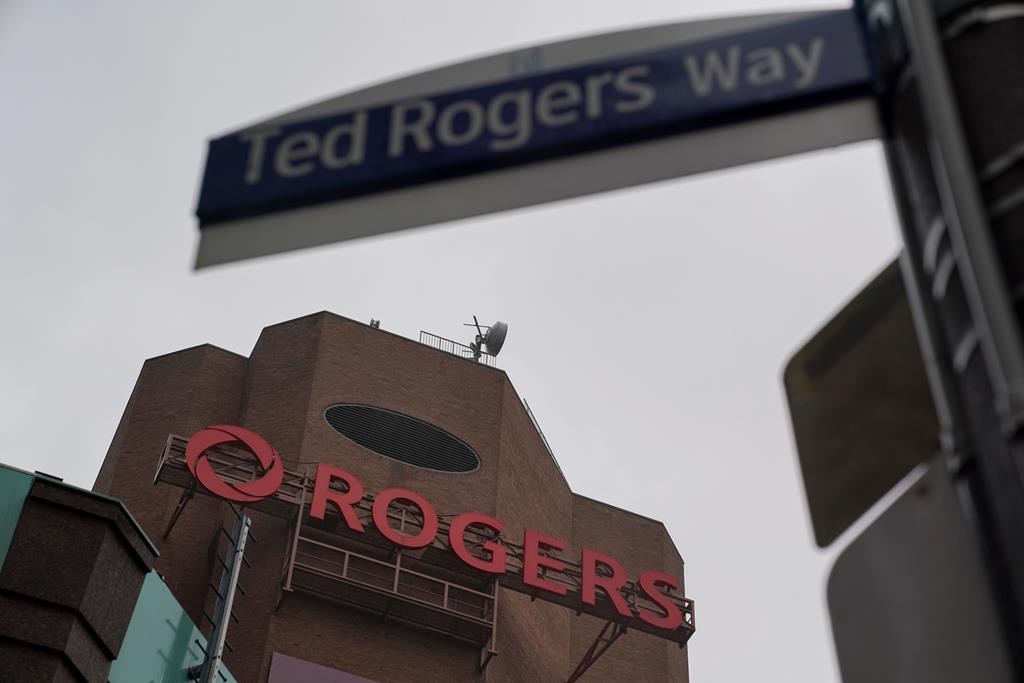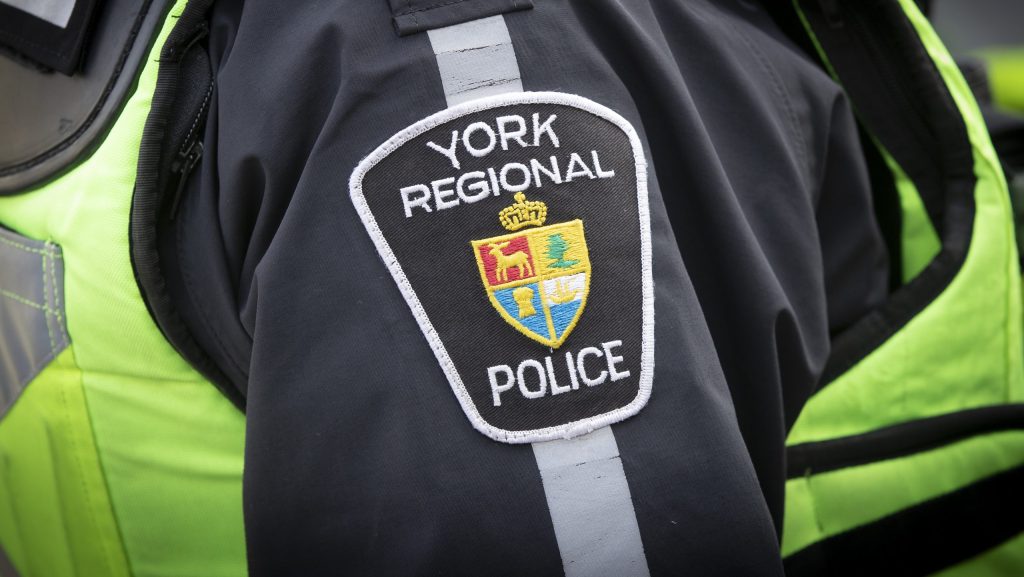Rogers teams up with SpaceX, Lynk Global to provide satellite-to-phone remote service

Posted April 26, 2023 1:33 pm.
TORONTO — Rogers Communications Inc. is partnering with SpaceX and Lynk Global to deliver satellite-to-phone connectivity across Canada and bolster coverage in remote regions.
The Toronto-based company says the moves are aimed at widening coverage for Rogers customers in areas that aren’t served by traditional wireless networks.
Rogers and SpaceX plan to use the latter’s Starlink low-earth orbit satellites and Rogers’ national wireless spectrum to offer satellite-to-phone technology in Canada.
The companies plan to start with satellite coverage for SMS text and will eventually provide voice and data access across areas such as national parks and rural highways that are currently unconnected.
Starlink aims to offer broadband internet in areas where connections tend to be unreliable, expensive or unavailable.
In December, SpaceX founder and CEO Elon Musk tweeted that “Starlink works in even the most remote regions of Antarctica.”
Musk has also previously tweeted that Canada “is a major priority for Starlink” and the technology would be “designed to serve the least-served.”
Ottawa approved SpaceX’s bid to provide high-speed internet to Canadians through Starlink in November 2020. That sign-off came after the CRTC granted the company’s application for a license the previous month.
SpaceX had promised to dim the brightness of the low-earth satellites to avoid light pollution after some Canadians raised concerns during the CRTC approval process.
“As a Canadian, I’m excited that SpaceX is collaborating with Rogers to bring SpaceX’s Direct to Cell service to Canadians,” said Sara Spangelo, co-lead for Direct to Cell at the company, in a statement.
While Rogers didn’t specify a timeline for expanding coverage through the SpaceX partnership, it said it would begin to expand satellite-to-phone coverage in 2024 across remote regions and rural highways by way of its agreement with Virginia-based Lynk Global.
Rogers said it plans to seek regulatory approval from multiple federal departments and the CRTC to launch Lynk’s technology in Canada.
“From underground transit systems in Canada’s largest cities, to cell towers in space covering Northern communities, Rogers is leading to bring Canadians the biggest and best wireless networks across the country, to keep them connected and safe,” said Rogers president and CEO Tony Staffieri in a press release.
“Emergencies do not wait and that is one of the reasons why we are investing to make sure Canadians can always reach 911 from anywhere in Canada.”
Rogers suffered a massive, daylong network outage in July that left more than 12 million mobile and internet customers without service, including trouble connecting to 911.
Since then, the three largest carriers reached a formal agreement to “ensure and guarantee” emergency roaming and other mutual assistance in the case of a major outage after Industry Minister François-Philippe Champagne directed the companies to create a backup plan.
The company said it has conducted successful technical tests with Lynk satellites in remote areas of British Columbia and will start testing in Atlantic Canada next.
“Improving cellular service availability is vital to enhancing public safety for people living in and travelling through remote and rural parts of B.C. and across Canada where there is no network access,” said B.C. Citizens’ Services Minister Lisa Beare in a press release.
“When complete, this added and innovative approach to bring services to the hardest to reach areas of our province will increase the safety of people and first responders in B.C. and throughout Canada.”
Earlier on Wednesday, Rogers reported its profits increased by 30 per cent to $511 million in the most recent quarter as it prepared to close a deal to buy Shaw Communications Inc.
The first quarter, which ended March 31, marks the last period before the telecommunications giant Rogers combines with Shaw, which it purchased in March 2021 for $26 billion.
The two companies only got final government approval for the deal to move forward earlier this month, after agreeing to several terms including selling Shaw’s wireless business, Freedom Mobile, to Quebec-based Videotron.
In the three weeks since the transaction was closed, Staffieri said he’s been focused on delivering $1 billion in synergies over the next two years, increasing capital investments in its and driving more competition and choice for customers, especially those in Western Canada.
“There’s lots of work to do, but I am very encouraged with the energy and excitement that I have seen in both the east and west as we bring these two strong companies together,” he said on a Wednesday call with analysts.
He added that he has spent much of the last month in the west, meeting with Rogers staff, customers and local governments and plotting further moves that will integrate Shaw.
He shared in mid-April that Rogers will relocate around 300 Shaw call centre jobs based overseas to B.C., Alberta and Manitoba — part of Rogers’ commitment to have a customer service team completely based in Canada.
As part of a set of conditions Ottawa attached to its approval of the merger with Shaw Communications Inc., Rogers must create 3,000 new jobs in Western Canada and establish a second headquarters in Calgary.
It must also spend $5.5 billion to expand 5G coverage and additional network services, as well as a further $1 billion to connect rural, remote and Indigenous communities.
Videotron was similarly ordered to offer plans that are at least 20 per cent lower than its competitors and spend $150 million over the next two years to upgrade Freedom Mobile’s network.
If Rogers breaches its conditions, it must pay up to $1 billion in damages. Videotron would potentially be subject to $200 million in penalties if it fails to meet its commitments.
Rogers’ work to tie up the Shaw deal and its $511 million profit compared with a net income of $392 million in the same period last year, when the company was still awaiting several approvals for the transaction, including the Competition Bureau, which vigorously fought the merger.
The profit amounted to diluted earnings per share of $1 for the period ended March 31, up from 77 cents during its previous first quarter.
“The Rogers business is executing better today than when this (Shaw) transaction was announced over two years ago, so we are ready and excited to move forward,” said Staffieri.
On an adjusted basis, its net income totalled $553 million, a 20 per cent increase from $462 million during the prior first quarter, while its adjusted diluted earnings per share moved from 91 cents to $1.09 per share.
Analysts on average had expected a profit of $1.45 per share on a non-adjusted basis and $1.01 on an adjusted basis, according to estimates compiled by financial markets data firm Refinitiv.
Revenue for the period ticked up six per cent to $3.8 million in the most recent quarter, up from $3.6 billion in the previous first quarter.
Rogers’ revenue was fuelled by the company adding 95,000 net postpaid mobile phone subscribers, up 44 per cent from 66,000 last year.
Its monthly churn for the category was 0.79 per cent, up from 0.71 per cent during its previous first quarter.
Rogers’ wireless mobile phone average revenue per user was $57.26, one cent higher than the first quarter of the prior year.
This report by The Canadian Press was first published April 26, 2023.
Companies in this story: (TSX:RCI.B, SJR.B)
Sammy Hudes, The Canadian Press
Note to readers: This is a corrected story. A previous version included incorrect monthly churn rates for this quarter and the previous first quarter.








